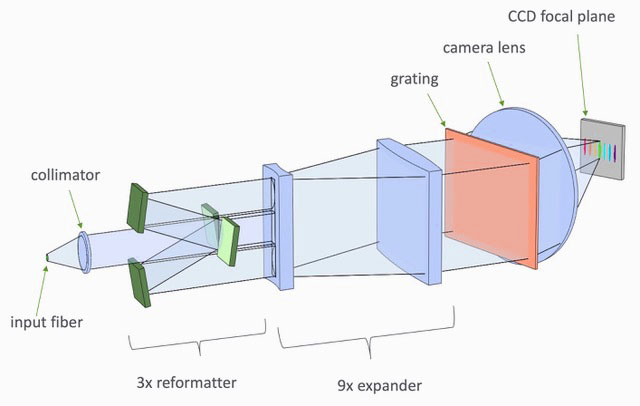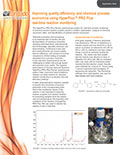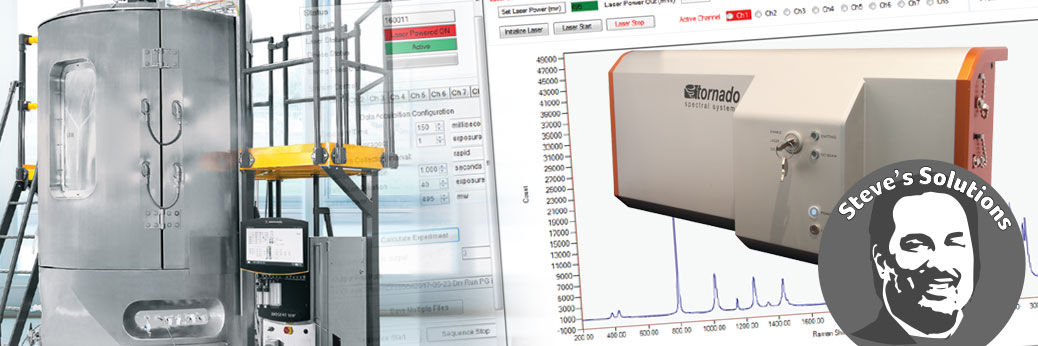Rapid, Sensitive Raman Detection for Bioprocess Monitoring
Summary
The Tornado Hyperflux PRO Plus Raman system which incorporates their High Throughput Virtual Slit (HTVS) technology provides excellent performance for applications where rapid and sensitive process Raman measurements are required. The system has recently been incorporated into the Sartorius ambr® bioprocess system as well as other reactors. The OPIS 35 laser configuration for operation in ATEX Zone 0 environments allows for worldwide use of this technology.
The advent of bioprocesses for the development and manufacturing of biologically-significant peptides and proteins requires monitoring and optimization of numerous parameters within the development matrix. This requires rapid, sensitive diagnostic techniques in order to monitor all relevant parameters within a given process.
Raman spectroscopy is a very powerful laser-based technique for bioprocess monitoring. Raman provides very specific information related to chemical composition as well as to subtle changes in the process environment (e.g., temperature, pH, etc.). While Raman is a powerful measurement technique, it suffers from being an inherently weak phenomena that often requires long measurement times and high laser powers, often limiting their applicability for monitoring purposes.
Tornado Spectral Systems offers a Raman measurement system based on a High Throughput Virtual Slit (HTVS) design which allows for rapid, sensitive Raman measurements. Most gratings-based spectrometers suffer from a large loss of light due to the need for slits to obtain high spectral resolution. The HTVS technology retains this light, providing high spectral resolution with much higher collection efficiency than other Raman systems on the market.

Tornado has recently demonstrated the value of their design for a range of applications that require speed and sensitivity including:
 | APPLICATION NOTE Chemical reaction monitoring: download Application Note here |
 | APPLICATION NOTE: Bioprocess reaction monitoring for simultaneous monitoring of 9 components/factors: |
Raman Reaction Monitoring with the Sartorius ambr® Bioprocess System and Single-Use Reactors
Bioprocess and pharmaceutical processes have traditionally been performed in steel reactors that need to be meticulously cleaned after each use to remove any historical effects from previous processes in that reactor. The advent of single-use bioreactors provides for superior bioprocess development and manufacturing as there is no history of previous chemistries.
Sartorius has developed a series of ambr® bioprocess systems with single-use reactors that can incorporate Raman detection at multiple points for bioprocess monitoring. This hardware can be combined with their BioPAT software to enable advanced chemometric analysis for complex methods.
Raman detection with the Sartorius ambr® can hypothetically be used with a wide variety of Raman spectroscopic systems. However, the high throughput of Tornado’s HTVS technology allows for rapid reaction monitoring and sensitive detection to provide superior measurement capabilities compared with other technologies.

OPIS 35 Laser Configuration for Operation in ATEX Zone 0
The intensity of Raman scattering from most aqueous solutions/suspensions can be fairly low. In order to provide for greater sensitivity and shorter measurement times, laser intensities of 500 mW or more are often used in these systems.
From a safety standpoint, the use of lasers at this intensity does require operation in a manner that is safe for those in the immediate vicinity of the system. In addition, high laser powers do provide for an increased risk (albeit small in bioprocesses) of explosions. In many regions, legal mandates require a much lower laser intensity to be used for measurements of this type.
Tornado now offers the OPIS 35 configuration for operation in ATEX 0 zones. This configuration limits the laser power emitting from the system to 35 mW. Through the use of the OPIS 35 configuration, the Tornado Raman system can be operated worldwide for process monitoring applications. The HTVS design of the Tornado system allows for routine process monitoring in situations where other Raman configurations would not provide useful measurements at these laser powers.
More information on the Tornado OPIS 35 configuration may be found here.
Conclusions
Raman spectroscopy is a powerful tool for bioprocess monitoring. The Tornado Raman HTVS provides unique capabilities for rapid reaction monitoring and, where needed, the OPIS 35
configuration of the Tornado system allows for operation in a safe manner that meets normal regulatory requirements.
For More information
Tornado Spectral Systems Corporate Page
Sartorius BioPAT® Spectro Raman integration

Contact Us Online Form
Phone: 916-897-2441
Email: info@Barnett-Technical.com

